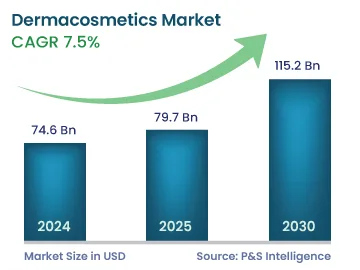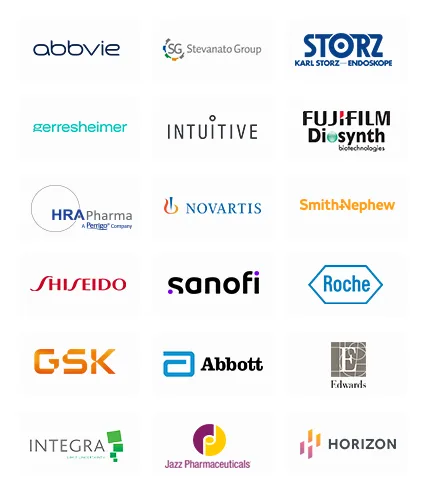Dermacosmetics Market Future Outlook
The global dermacosmetics market generated an estimated USD 74.6 billion revenue in 2024, and it is projected to witness a CAGR of 7.5% during 2024–2030, to reach USD 115.2 billion by 2030. The growth of the industry is majorly attributed to the surging purchasing power of consumers, the increasing inclination toward spending on appearance, the growing prevalence of skin diseases, and the rising number of conferences to increase awareness of dermacosmetics.
Also, the rising customer spending on beauty and looks and the growing focus on online shopping are driving the market. People are increasingly opting to invest more in skin protection and radiance by utilizing these products to lessen the indications of aging, wrinkles, acne, and fine lines.
Moreover, in March 2022, Dubai Derma organized the 21st edition of the Dubai World Dermatology and Laser Conference and Exhibition, which was dedicated to improving skin health by showcasing such products. Such conferences and seminars increase awareness about skin health, which, in turn, encourages companies to broaden their product portfolio with new products, thereby escalating market growth.
The surging usage of organic products, such as olive oil, green tea, oats, acai berry, mulberry, pomegranate, and coffee berry, is expected to open up new economic potential. As cosmetics include chemical components that can have several undesirable side effects on the skin, manufacturers have begun to utilize cutting-edge ways to enhance the sales of their cosmetics by releasing new products with more natural ingredients and appealing packaging.





